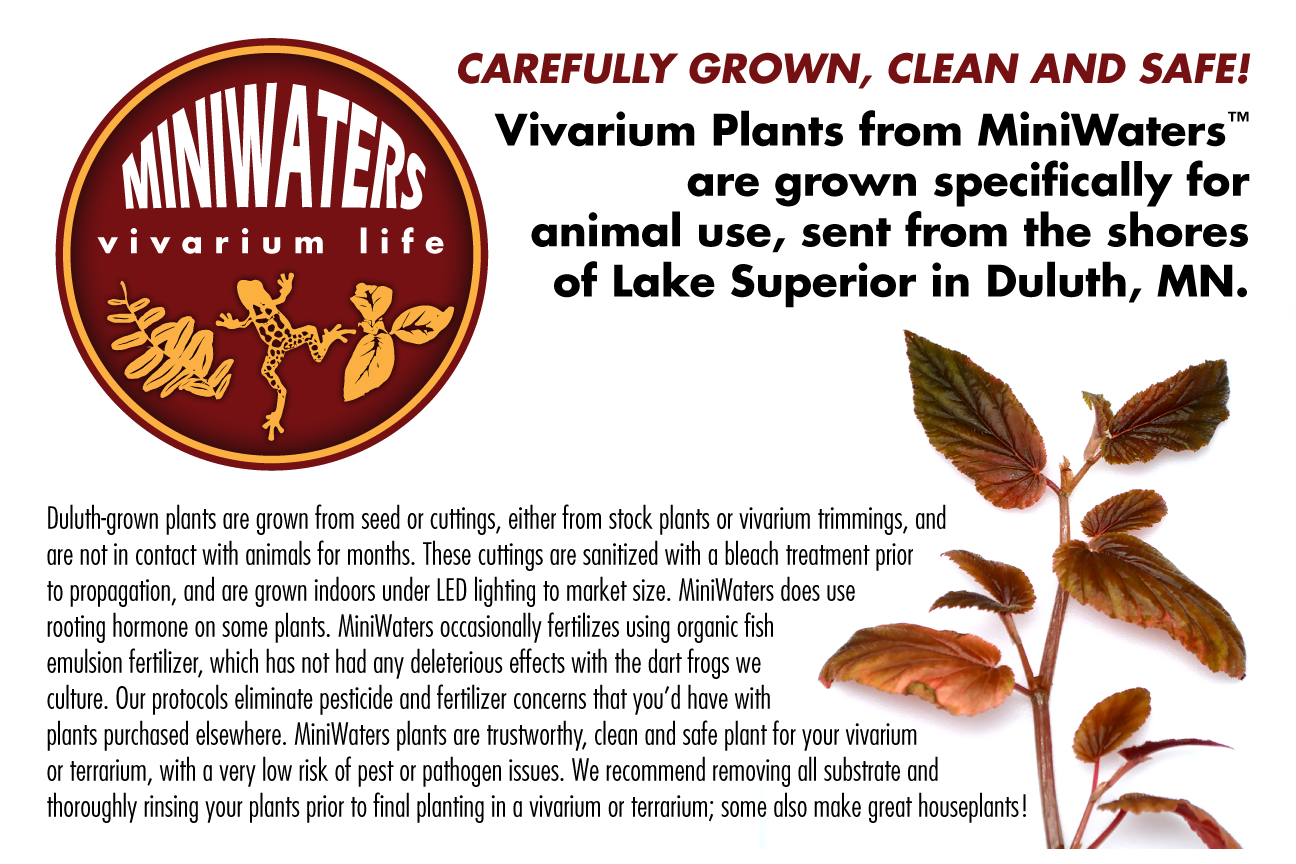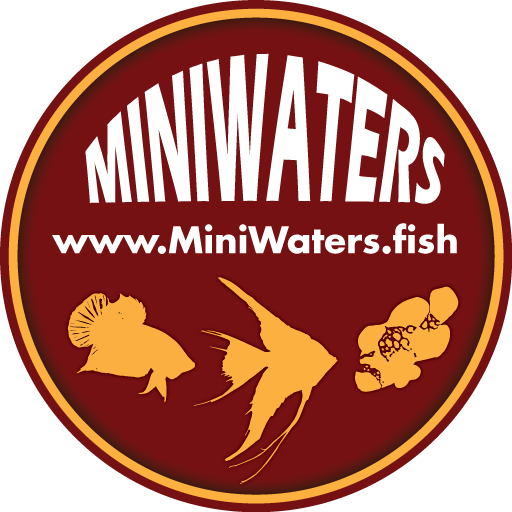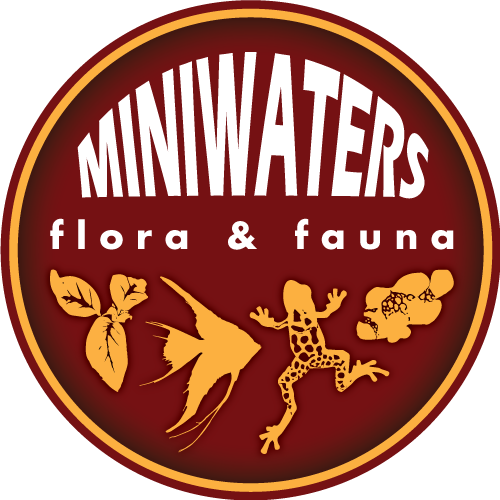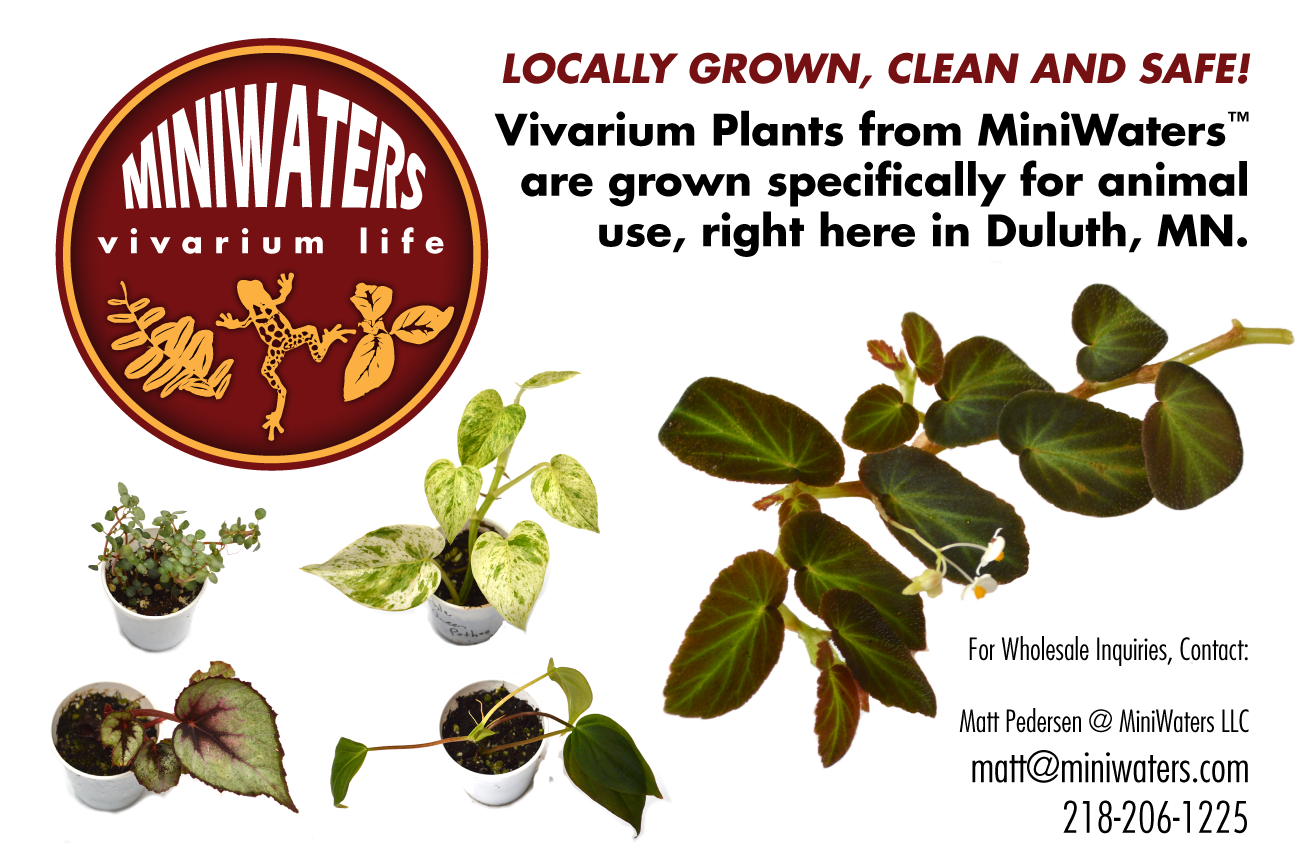Insights, News & Notes, Vivariums
Why MiniWaters Vivarium Plants?
Congratulations!
If you found your way here after purchasing a MiniWaters vivarium plant, this is the page where you’ll learn everything about how we produce our plants and the transparent philosophy behind why we call them Safe, Clean, and Trustworthy.
Why did a fish hatchery, wholesaler, and retailer, start growing vivarium life?
In the fall of 2018,
Since that time,
We saw many reasons to take on this challenge, primarily due to the “unknown” nature of most of the plants available to the vivarium hobbyist. The most repeated concern of vivarium keepers
As a result, what you often see are people either “
Then, there are dedicated plant sources in the vivarium marketplace already, and most are quite good at providing nice plants. Many of ours originated from these vendors, and we’d never hesitate to recommend them. Still, where those plants come from, and how they are produced, isn’t really disclosed.
We just thought we could offer something even better.
You may have seen one of our postcards, and are curious to learn more. If you haven’t seen them yet, here’s a look! If you’re a retailer

Our Duluth-grown Vivarium Plant Overview
Duluth-grown plants are grown from seed or cuttings, either from stock plants or vivarium trimmings, and are not in contact with animals for months. These cuttings are normally sanitized with a bleach treatment prior to propagation and are grown indoors under LED lighting to market size. MiniWaters does use rooting hormone on some plants. MiniWaters occasionally fertilizes using organic fish emulsion fertilizer, which has not had any deleterious effects on the dart frogs we culture.
We grow our vivarium plants in Organic Pro-Mix that has additional perlite added to it. We may also augment our growing medium with organic time-release fertilizers; in the vivarium, you have frog poop to fertilize your plants, but we don’t have that in an “animal-free” culture setting.
We recommend removing all substrate and thoroughly rinsing your plants prior to final planting in a vivarium or terrarium, particularly as perlite is known to be a source of digestive tract obstruction if ingested by animals. Yes, you may lose some plant roots during this process, but they will regrow vigorously if placed in a suitable vivarium substrate!
We prophylactically treat new broodstock plants with neem oil and/or spinosad, both OMRI-listed organic control agents meant to eliminate incoming pests, and in rare instances, may use these products on production plants should a problem be discovered. You should always thoroughly rinse and ideally sanitize any plants you purchase from any source, prior to adding them to your vivarium.
Ultimately, our transparency and protocols eliminate the worrisome “chemical” pesticide and fertilizer concerns that you’d have with plants purchased elsewhere. MiniWaters plants are clean, safe, and trustworthy plants for your vivarium or terrarium (or even as houseplants where suitable), with a very low risk of pest or pathogen issues.
While we strive to produce a top quality vivarium plant, we do not promote our plants as 100% “pest, disease, and pathogen-free”.
We are, however, confident that they are:
- CLEAN – based on how we propagate and grow our plants; these aren’t simply cuttings from a friend’s vivarium covered in frog poop!
- SAFE – we use them with our own animals!
- TRUSTWORTHY – because we share exactly how we do it, transparently. You can, therefore, make an informed decision and independent judgment to determine whether our plants meet your high standards for use in your next vivarium or terrarium and alongside the precious life it may contain!
When using our plants in-house, we remove plants from potting media, inspect, and rinse before planting.
However, once our plants leave here, they can come in contact with other pests and animals. So we encourage all plants to be re-sanitized by the end user if there is any suspicion or concern of ANY vivarium plant you purchase, whether the one we grew or someone else’s. Here’s how we do it:
MiniWaters’ Vivarium Plant Sanitization Protocol
Our sanitizing protocol has been utilized on nearly every plant we propagate here the time of propagation, after which the plants are grown isolated, with no animal contact, from that point forward. This protocol is an adaptation of the vivarium hobby’s generally recommended application to reduce or eliminate pathogens and pests on vivarium plants.
Bleach is a harsh chemical, but it is also highly effective and easily managed and neutralized. We provide this sanitization protocol for informational purposes only; it is up to you to apply it in a safe and successful manner, and your use of this protocol is strictly at your own risk.
This protocol will not eliminate systemic issues in plants. It may not remove pesticides on the surface of a plant. It will not remove systemic pesticides or fertilizers, only time can really do that. It will not eliminate plant diseases such as viruses.
Our sanitization protocol should reduce or eliminate surface born plant pests and animal pathogens. Bleach is highly effective in this application, but it is likely not 100%. The added time our plants spend in cultivation, without animal contact, does allow for the possibility of plant pests to become reestablished (our indoor, closed growing space is a further preventative step), but conversely, lessens the chances that any animal pathogen which slipped by manages to remain viable.
Again, while we strive to produce a top quality vivarium plant, we do not promote our plants as 100% “pest, disease, and pathogen-free”. We just think what we produce is the lowest-risk plant available.
The only plants we do not normally utilize this protocol on are the assorted mosses we occasionally offer. These mosses generally grow spontaneously in our growing trays or are started from dormant spores. We do not recommend the following protocol be used on living mosses, although most do recover, in time. If you desire to bleach your mosses, we recommend a more dilute ratio of bleach and shorter contact time. But again, if a cup of mosses carries the MiniWaters label, it was likely grown animal free from inception, indoors, and as such, carries very minimal risk.
Bleach Sanitization Protocol Steps
- Unpot plant and discard substrate. Rinse all substrate off roots. Visually inspect for any pests. Remove damaged leaves and any pests you might find.
- Submerge and soak plants in a bowl of room temperature water for 15 minutes to fully hydrate. Be sure to fully submerge the plants.
- Prepare a solution at a rate of 1 cup water to 1 tablespoon generic, unscented, household bleach, enough to completely cover the plants in the bowl. We measure the water by the cup first, pouring over the plants, and then add in the appropriate amount of standard bleach (e.g. 3 cups water requires 3 tablespoons of bleach). This is a 16:1 ratio of water
:bleach . - Submerge and soak plants in bleach sanitization solution for 15 minutes. You may occasionally gently stir and turn over the plants in the bath to ensure full coverage.
- After this bleach bath, drain the plants and rinse them thoroughly under running lukewarm tap water.
- Prepare a final bath of room temperature water, add aquarium dechlorination (eg. Chloram-X), and soak plants again for at least 15 minutes. Gently mix to ensure the dechlorinator is coming in contact with any bleach that remains. (Note – if you do not have aquarium dechlorinator, simply rinse further, as ultimately bleach dissipates)
- Check your plants, allow to mostly dry, smell for any bleach. If any hint of bleach is noted, repeat #6 until resolved.
- We normally hold plants for at least another 24 hours longer before planting them in a vivarium as an added safety measure, which would allow any remaining bleach to dissipate through evaporation.
Again, bleach is easily controlled and eliminated, but we encourage extra precaution considering the delicate nature of some vivarium animals. If there is any doubt, simply put, wait, dechlorinate and/or rinse, dry, and repeat as you feel necessary until you are confident.
MiniWaters LLC is not responsible for any mishaps that could occur following this protocol, as we are not there overseeing your application, nor have we tested this with every living creature on the planet. We provide this protocol in the spirit of transparency (it’s the facts that stand behind the product we produce and sell), and frankly, so long as our plants are well cared for and kept separate from animals and plants from other facilities, they should be as clean and safe as when they leave our growing space and would not require this treatment.
QUESTIONS
At some point, we may put some plants into our online shop, even if only for informational purposes. But time is always limited, so a project like that may only happen on a rainy day.
So if you have questions about a MiniWaters Vivarium Plant you’ve purchased, please don’t hesitate to email the man himself and you’ll get a prompt reply – matt@miniwaters.fish



